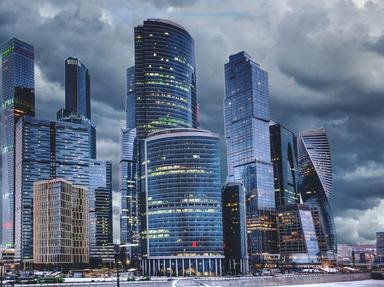Quiz Answer Key and Fun Facts
1. One hundred and five meters (346 feet) underground, you board a train at the ultra modern Arsenalna metro station, the deepest in the world, which was built along with the rest of the system after World War II. You are in which world capital city?
2. Of these capital cities in Oceania, which has been the capital of its present country the longest? (Hint: consider formation of country/ independence date)
3. Which of these Central American countries is unlike the other three, because its capital city is not named after the country?
4. Three of these capitals are on the coast of their respective countries. Which one is NOT?
5. The Republic of South Africa has not one but three capitals! Which city is NOT one of them?
6. It's 2003 and you are visiting a capital city whose country is in the European Union. You go to pay for something with your supply of Euros, but are told they still use krona, their old currency, because the citizens voted by referendum not to tie their currency to the Euro. Where are you?
7. Which of these South American capital cities is the highest above sea level?
8. Where to locate the capital of a country is often not as simple as picking the biggest or most important city. Which national capital was chosen as a compromise between northern and southern sections of the country?
9. Which of the following is NOT a correct pairing of country and capital?
10. Which famous landmark is NOT located within the capital city matched with it?
Source: Author
Nealzineatser
This quiz was reviewed by FunTrivia editor
spanishliz before going online.
Any errors found in FunTrivia content are routinely corrected through our feedback system.


